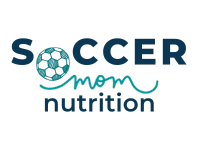Performance Plate: How to Fuel Your Body for Sports Goals
How do athletes know what and how much to eat on rest, training and game days? The performance plate method gives you the tools to adjust food intake to match your energy and nutrient needs.
And it’s without calorie restriction or counting calories. Instead you focus on the right amount of food to fuel your body based on your activity level.
The performance plate method provides athletes with the right balance of nutrients to support their performance and recovery needs based on the demands of their training schedule.
There are three training and intensity categories of the performance plate method training days, game days and rest days.
In this post, we will explain the performance plate method and how you can use it to optimize your nutrition for each of the days.
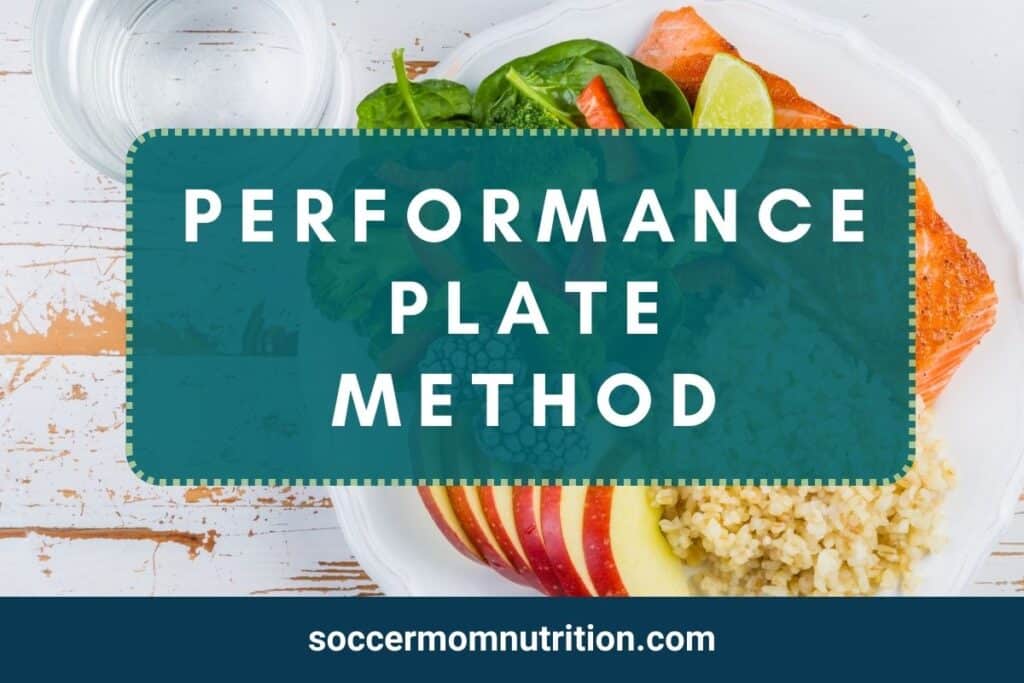
What is the performance plate method
The performance plate method is based on the idea that what you put on your plate should match the intensity and duration of your training or competition. It’s a visual cue to guide you in planning out meals.
The more demanding your activity, the more carbohydrates you need to fuel your muscles and brain.
The less demanding your activity, the fewer carbohydrates you need and the more vegetables and healthy fats you can include.
Protein is important for every plate, since it helps you build and repair your muscles. It’s also best to eat a consistent amount of protein at each meal. (1)
Let’s look at each performance plate in more detail.
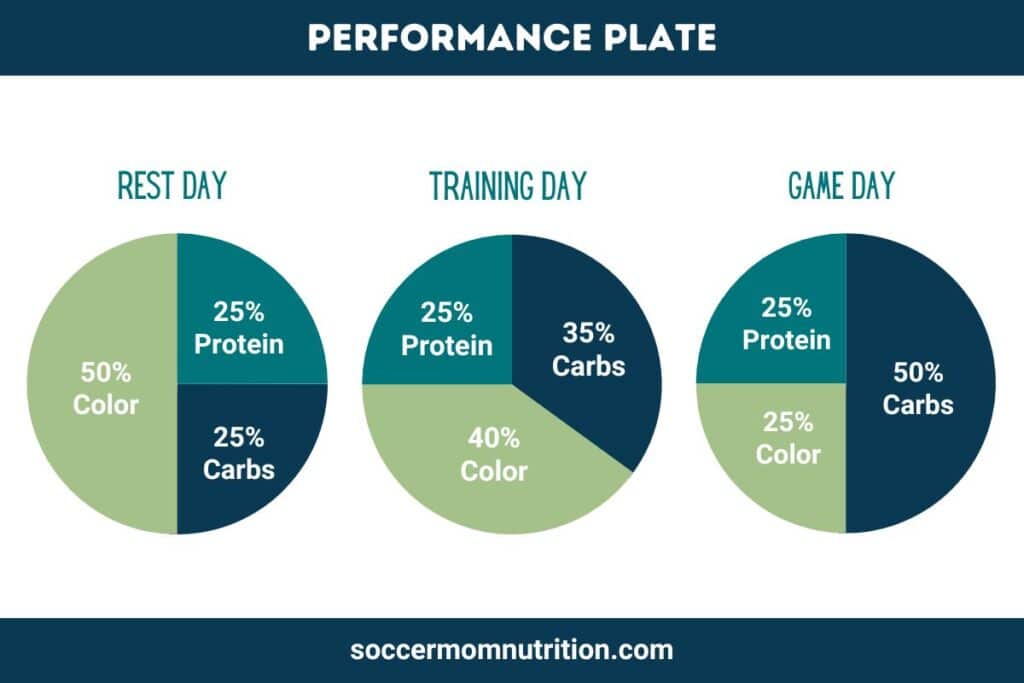
What foods make up the performance plate
Each performance plate has carbohydrates (carbs), protein, color (fruits and vegetables) and healthy fats. Another important nutrient is water, so you should make sure to drink enough water and fluids at each meal to be well hydrated.
Rest day plate
The rest day plate is for days when you have a light or easy workout, you’re traveling, or when you are tapering, rehabbing or resting. You don’t need to load up on carbohydrates on these days, as your energy needs are lower.
Instead, you can focus on eating more vegetables and healthy fats, which provide vitamins, minerals, antioxidants and anti-inflammatory benefits. Your rest day plate should have 50% color (vegetables and fruits), 25% protein and 25% carbohydrates.
Some examples of foods that fit this plate are:
- A large salad loaded with veggies, grilled chicken, quinoa, avocado and dressing
- Roasted vegetables with salmon, brown rice and olive oil
- Vegetable soup with turkey sandwich on whole wheat bread, side of fresh fruit
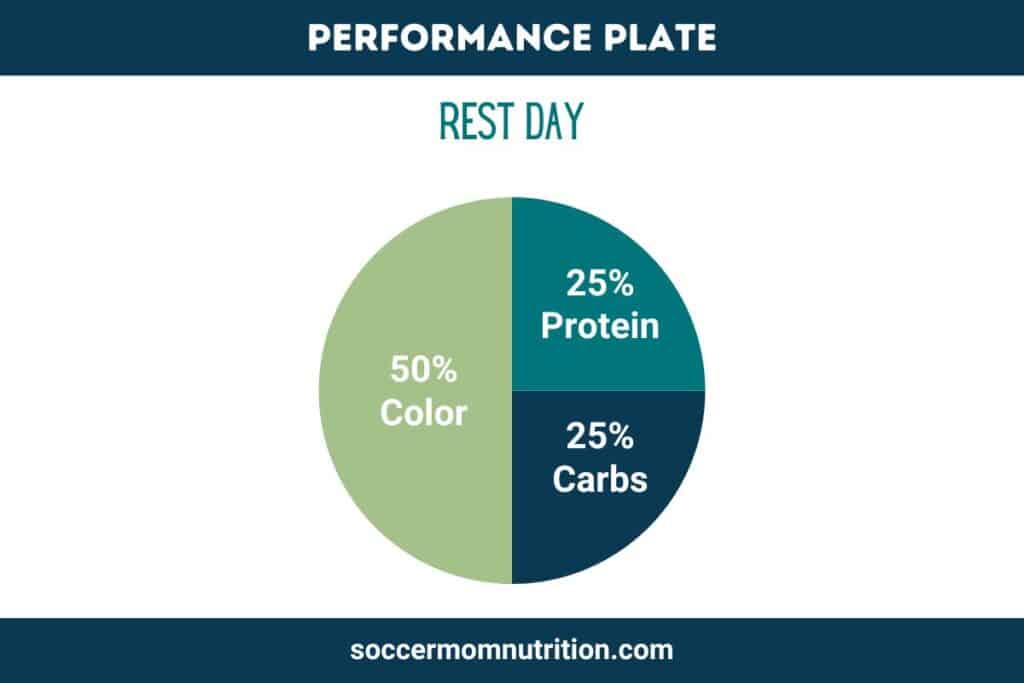
Training day plate
The training day or practice day plate is for days when you have a moderate intensity workout or two sessions, such as an endurance session and a technical skill session.
You need more carbohydrates on these days to support your energy levels and recovery, but not as much as on hard or game days.
Your training days plate should consist of about 35% carbohydrates, 25% protein and 35% color (fruits and vegetables).
Some examples of foods that fit this plate are:
- Pasta with meat sauce and steamed broccoli
- Stir-fried chicken and vegetables with rice
- Turkey burger with whole wheat bun, green salad and roasted potatoes

Game day plate
This plate is for days when you have a hard training or game that requires a lot of energy and intensity.
On game day, your focus is on fueling your muscles. So you’ll need to load up on carbohydrates to build your energy stores. When you’re playing at a high intensity, you could use up to 95% of your muscle glycogen stores.
Your hard training/game day plate should consist of at least 50% carbohydrates, 25% protein and 25% color (fruits and vegetables).
Some examples of foods that fit this plate are:
- Pancakes, syrup, scrambled eggs and fresh berries
- Bagel with peanut butter and banana
- Spaghetti with chicken and tomato sauce, whole grain roll, side salad
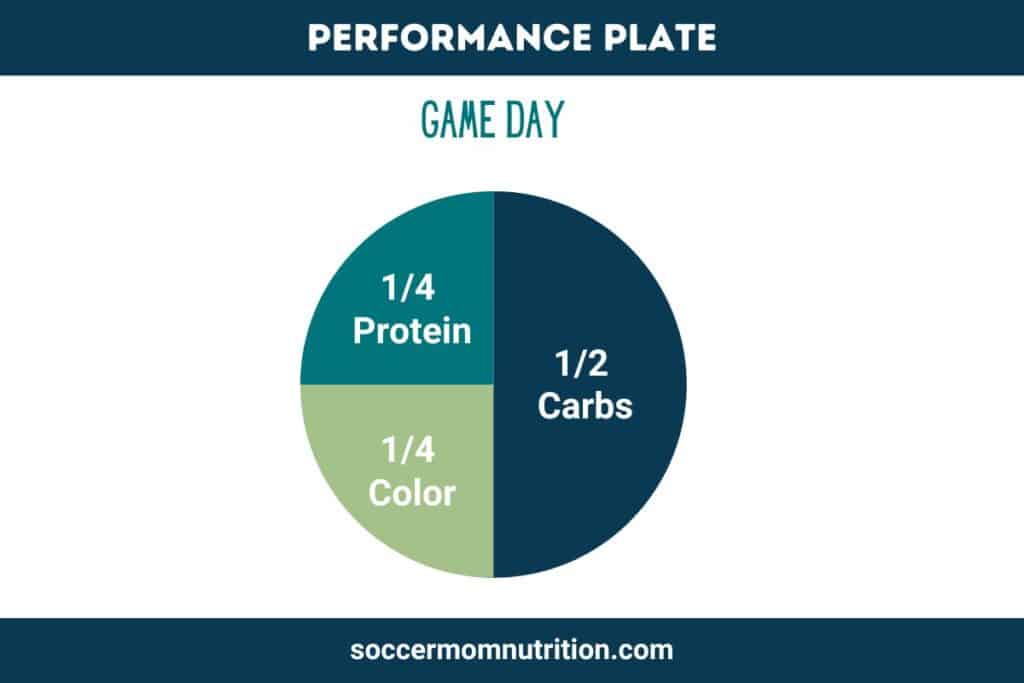
Final thoughts
The performance plate method is a simple and effective way to adjust your nutrition to your training and competition demands.
By using the three types of plates: rest, training and game day you can ensure that you are getting the right amount and type of carbohydrates, protein and fat for your activity level.
This will help you improve your performance, recovery and health.
Stephanie Magill, MS, RD, CD, FAND has over 22 years of experience in public health and nutrition. As a performance registered dietitian nutritionist, Stephanie specializes in sports nutrition and provides simple and actionable information so that athletes can be well fueled for high performance on and off the field. Stephanie has a Master’s Degree in Nutrition and is a Fellow of the Academy of Nutrition and Dietetics.
